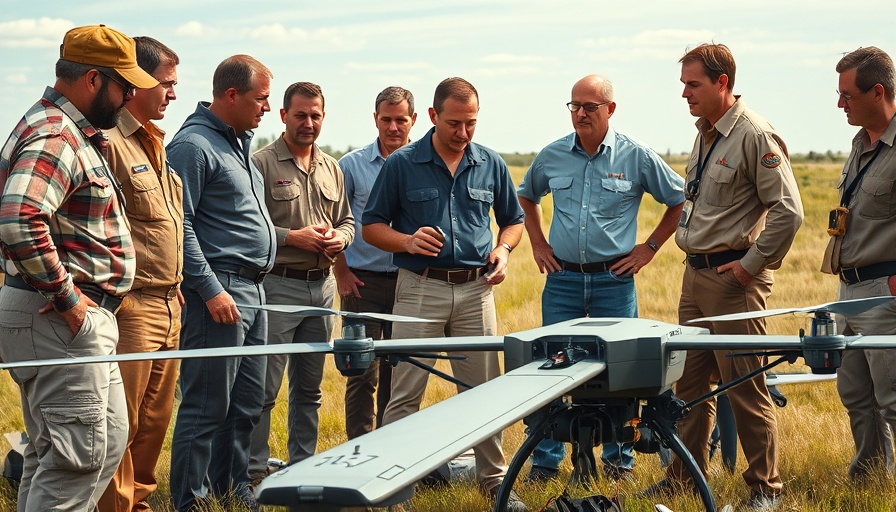
Marines Explore Long Range UAS Innovations for Future Operations
In a groundbreaking demonstration in Chaptico, Maryland, the Navy and Marine Corps took significant strides toward enhancing their tactical capabilities through the use of Long Range Tactical (LRT) systems. Conducted by the Program Manager for Small Tactical Unmanned Aircraft Systems (PMA-263), this two-week event showcased various unmanned systems from five innovative vendors. With advancements in technology, these operational tests highlight a future where aerial surveillance and support are as critical as ever.
The Involved Technologies and Their Significance
Five unmanned systems were put to the test during this two-week demonstration. These included the AeroVironment P550, Kraus-Hamdani K1000 ULE Block II, Aurora Skiron X, Edge Autonomy Stalker LRT, and Vector Longbow. All of which belong to the Group 2 category of unmanned systems that are known for their vertical take-off and landing (VTOL) capabilities. During these tests, the focus was not just on basic operation, but on gathering performance data critical for military applications such as their ease of use, operational range, and capability to carry payloads of up to seven pounds. This data will be pivotal in shaping future military tactics and operational effectiveness.
A Partnership for Progress: PMA-263 and the University of Maryland
The role of the University of Maryland (UMD) in this evaluation was crucial. The UMD team, made up of skilled drone pilots and experts, provided an impartial assessment of the systems. Program director Jim Alexander praised the collaboration, emphasizing that both parties benefit immensely from the knowledge exchange and the empirical data collected. This partnership not only facilitates an objective evaluation but strengthens military readiness by integrating academic research with practical applications.
Real-Time Feedback: Shaping the Future of UAS
Olivia Douglass, the integrated product team lead for PMA-263, pointed out that such flight demonstrations serve as essential market research for the Marine Corps. By directly interacting with vendors and observing their systems in action, they can thoroughly validate performance claims, leading to informed decisions on the next generation of unmanned systems. The insights drawn from this event will guide future assessments and help ensure that the Marine Corps remains at the forefront of UAS technology.
The Broader Implications of UAS Technology for Local Communities
The implications of these advancements in UAS technology extend beyond military applications. Innovations in unmanned systems can potentially transform areas such as disaster relief, environmental monitoring, and search and rescue operations. For communities like Chaptico, the impact of such technologies may lead to enhanced local safety and efficiency. As we observe these developments, it’s vital for local communities to engage with and support such initiatives, ensuring their welfare is prioritized amid rapid advancements.
Looking Ahead: The Future of Unmanned Aerial Systems
As technology continues to evolve, the future of unmanned aerial systems promises even greater capabilities. The data collected during this demonstration will play a crucial role in progressing the Marine Corps' operational strategies and can inspire the development of new technologies that benefit all sectors. By fostering relationships with technological innovators, the military and local communities can adapt and enhance their resilience in facing future challenges.
These developments not only underscore the need for collaboration between military entities and civilian innovators but also highlight how such technologies can enhance safety and operational efficiency within communities. As we witness further integration of technology in everyday functions, it's important to stay informed and engaged.
 Add Row
Add Row  Add
Add 




Write A Comment